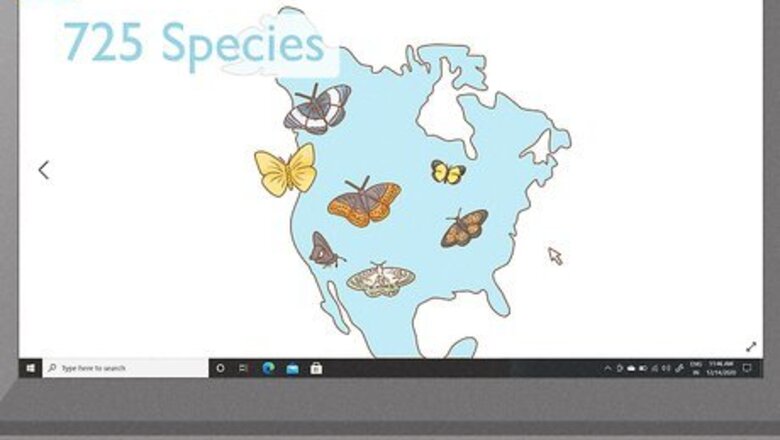
views
Searching for Caterpillars
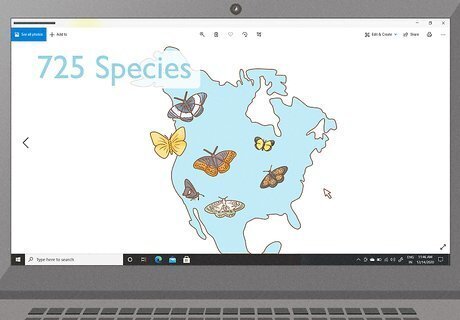
Learn which types of butterflies are native to the region in which you live. Knowing this will help you figure out which host plants to look for when seeking the caterpillars that emerge from the eggs that butterflies lay on the plant leaves. To learn more about the types of butterflies and caterpillars that reside in your area, either visit your state’s official website, go to a forestry and wildlife conservation website or office, or borrow some butterfly books from your local library. There are about 20,000 different species of butterflies in the world, and about 725 different species in North America. If you live in the U.S. it’s likely that there are about 100 butterfly species near you — even more if you live closer to Mexico.
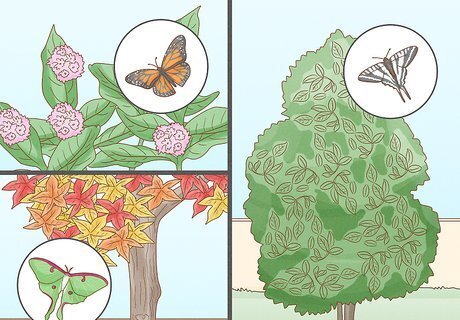
Know the different host plant types. Once you know which butterflies are native to your area, learn how to identify their host plants. You can look up images and descriptions of the plants online or in a book, or even download a mobile app. Here are some common host plants: Milkweed thrives in dryer climates across the U.S. and is a common host for Monarch butterflies. Spicebush thrives in moist woods and marshes, and commonly hosts the Spicebush Swallowtail. Paw-Paw trees grow in moist places across Ohio and most of the Eastern U.S., and commonly host the Zebra Swallowtail. Parsley, dill and fennel can grow in the wild but you’re more likely to find them planted in a butterfly aficionado’s garden. These herbs commonly attract the Black Swallowtail. Walnut and Sweet Gum trees host the Luna Moth. Several types of walnut trees grow across the U.S. They thrive in deep, fertile soils that are protected from cold air and water-logging. Sweet Gum trees thrive in deep, moist bottomland and full sun. Black Cherry trees host the Cecropia Moth, the Viceroy, and the Red-Spotted Purple butterfly. They grow across North America on various types of soils, but thrive in cool, moist and temperate locations.
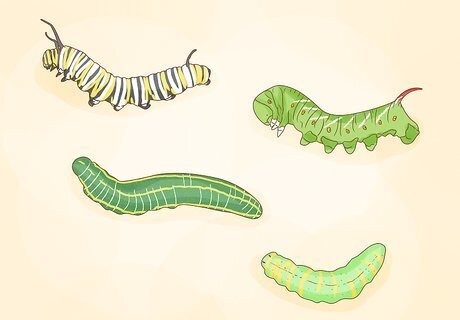
Familiarize yourself with what different types of caterpillars look like. Caterpillars look different from one another based on what species of butterfly they come from/will turn into. For example, they can be brightly coloured, hairy, spotted, skinny or fat. You can narrow down which type of caterpillar you’ve found by considering the host plant. For example, if you find a caterpillar on a Milkweed leaf, it’s likely a Monarch. The next step in figuring out which type of caterpillar you’ve found is to consider its appearance. As an example, Monarch caterpillars are striped yellow-green, white, and black, and look kind of thick and chubby. It’s a good idea to consult a book or website if you’re unsure of which type of caterpillar you’re looking at. Some websites even help you figure out which caterpillar you’ve found using checkboxes.
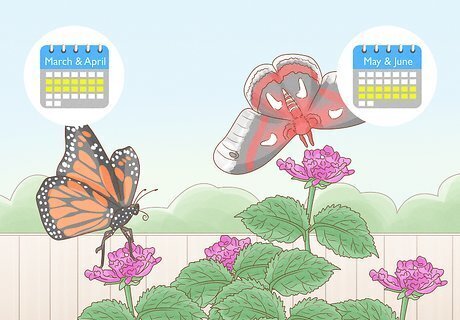
Ensure that it’s the right season. It’s possible to find caterpillars between early spring and early fall each year; different butterfly species lay eggs at different times. The key is to find out what types of butterflies are native to your area, then look up when they are most likely to lay eggs. Monarch butterfly eggs are laid and hatched in March and April; it takes the caterpillar about 2 weeks to be fully grown, after which it will attach itself to a stem or leaf and begin its metamorphosis into a butterfly. Cecropia and Polyphemus moths lay eggs in late May and June. Their eggs hatch within 1 to 2 weeks, and then the caterpillars spend the summer eating and growing, making their cocoons in August or September. They spend the winter in cocoons and emerge in late May or June as butterflies to lay eggs and start the cycle once more. As a general rule, June is a good time of year for finding caterpillars. If you can't wait until they’re in season, it’s possible to buy caterpillars from some companies so that you can raise them into butterflies yourself.
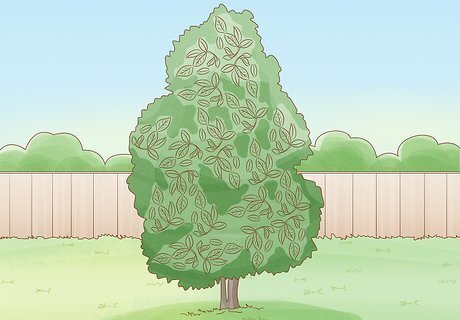
Go to a nearby area in which the host plants for local butterfly species generally thrive. This could be a nearby field, forest, woods, your backyard or garden, or even a local nursery.
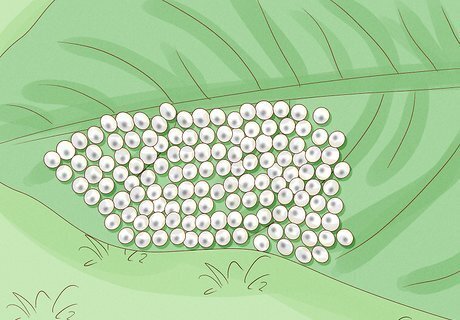
Look for eggs or caterpillars on the leaves and flowers of host plants. These will generally be on the bottom sides of the leaves/flowers of the host plants. As an example, a Monarch looks like a creamy yellow oblong dot — kind of like the head of those colored tailoring pins. If there are butterflies around, you might even see a butterfly lay an egg. If a butterfly lands on a leaf and lingers, it’s possible she’s laying an egg, so go and check the underside of the leaf once she’s gone.
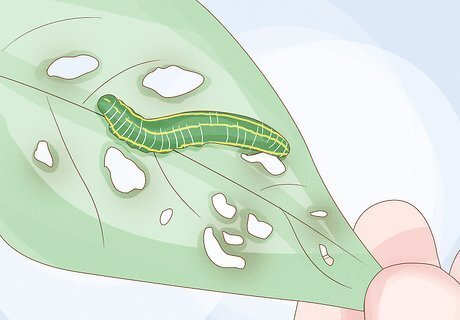
Look on the undersides of leaves that contain holes. In most cases, caterpillars will be hiding and chewing from the bottom side of leaves.
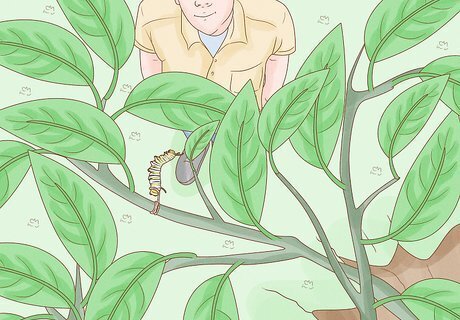
Stand beneath host trees and shrubs and look up for hanging caterpillars. Sometimes caterpillars will hang themselves off the sides of leaves and branches or hang by silken threads, especially if they feel at risk for danger.
Handling Caterpillars
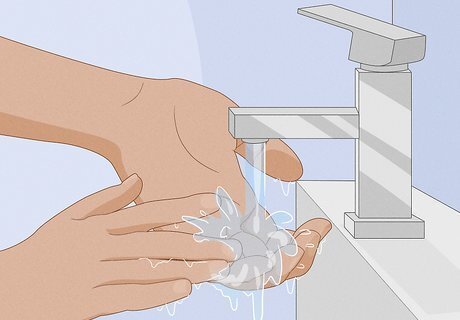
Wash your hands. Caterpillars are vulnerable to bacterial infections and can become sick simply through our touching them. For this reason it’s important to always wash your hands before touching caterpillars.
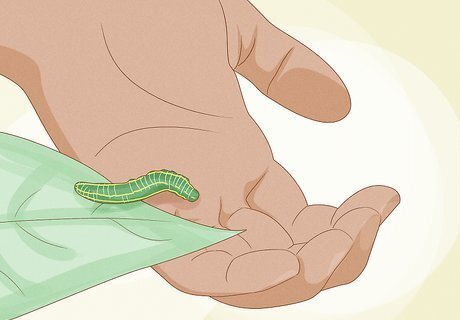
Be gentle. Handle caterpillars with the utmost care as they are fragile and can be easily killed. Be careful not to drop them, as even dropping them a small distance can kill them.
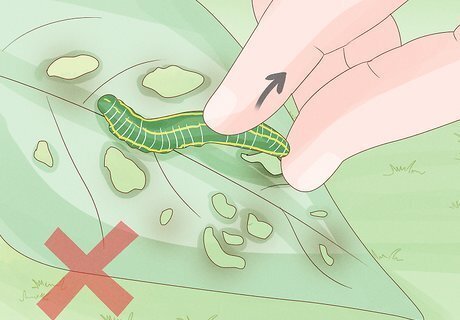
Don’t pull on caterpillars. Caterpillars cling tightly to the surfaces on which they walk. If you try to pick up a walking caterpillar, you might tear off their prolegs. If you wish to move a caterpillar allow it to walk on to its new surface on its own. If you want it off your hand, lower your hand to a leaf and let the caterpillar walk on to the leaf on its own. If you are keeping a caterpillar and want to change its host plant, put a new host plant into its container and give the caterpillar a few hours to move over to the new host plant before you remove the old one.
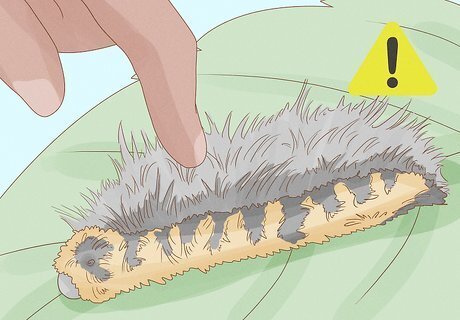
Avoid caterpillars with branching spines. If a caterpillar looks spiky, fuzzy, or hairy, it’s possible it has a branching spine that will sting you if you try to pick the caterpillar up. Most stinging caterpillars are brightly colored. Common stinging caterpillars include the Buck Moth, the Io Moth, Slug-like caterpillars, the Puss Caterpillar, the Saddleback Caterpillar, the Euclea delphinii caterpillar, the Hag Moth, and the Stinging Rose caterpillar.
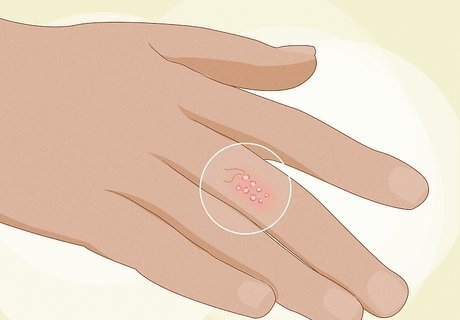
Know how to treat caterpillar stings. If you are stung by a caterpillar, you can use adhesive tape to remove any broken spines from the sting area, and then try washing it with soap and water to remove the venom and reduce irritation. You can also try putting ice and/or baking soda on the sting to help with pain and swelling. Caterpillar stings are similar to bee stings in that they are generally not fatal, but severe reactions can occur. If you have a history of asthma or any allergies, or allergic reactions such as difficulty breathing or severe swelling occur, seek medical help immediately.
Raising a Caterpillar into a Butterfly
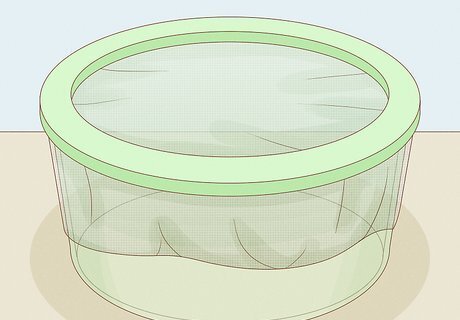
Choose a container for your caterpillar to live in. Many people would prefer to leave caterpillars in their natural habitats, but if you feel comfortable taking one home, make sure you have a suitable container for it. Suitable containers for caterpillars include aquariums or even one-gallon jars. The top of the living space should be breathable and securely fastened: cheesecloth or a thin-mesh screen will work well. Do not simply poke holes into a jar lid, as this will not provide enough fresh air for the caterpillars. In addition, if they crawl on to the lid the sharp edges of the holes may cut the caterpillars open.
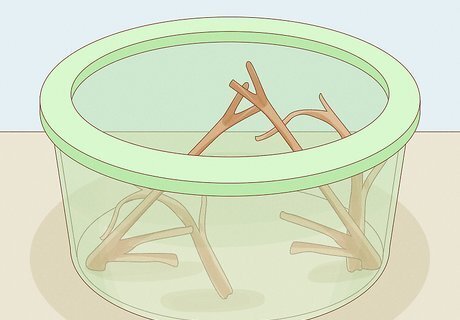
Add sticks to the container. These need to be securely fastened and strong enough for the caterpillars to crawl on and pupate on. When pupating, many caterpillars hang upside down and after some time emerge as butterflies. Note that not all caterpillars hang upside down to pupate, however. Some moth caterpillars dig down into the soil to pupate.
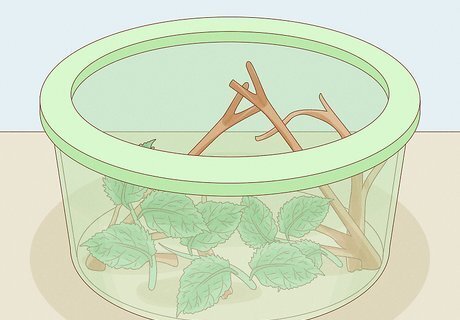
Feed the caterpillar the correct plants. Caterpillars will only certain types of plants, and this differs based on species. Your best bet is to feed your caterpillar the same type of plant that you found it on, but if this isn’t possible, find out what type of caterpillar you have and then feed it leaves from its ideal host plant.
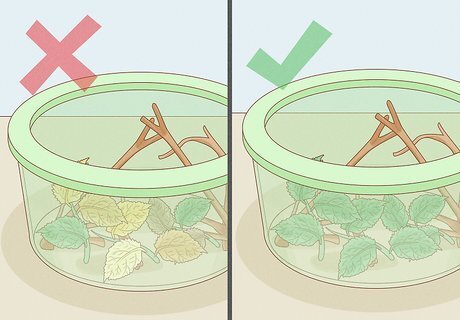
Ensure that the leaves you feed your caterpillar are fresh. If you can fit a live, potted plant in their cage, that’s ideal. If not, make sure you are within close range of their host plants so that you can retrieve fresh leaf clippings for your caterpillar every day. Caterpillars won’t eat dead, dry, or old leaves, so it’s imperative to make fresh ones available to them each day. You can keep leaves in water to preserve them, but do not keep the water in the same container as the caterpillar as the caterpillar could fall into it and drown. Caterpillars get the hydration they need from eating plants, so there’s no need to keep water in their container.
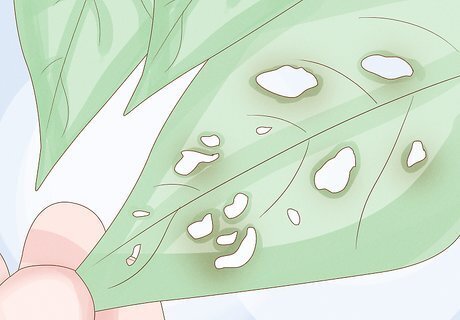
Check your leaves. Make sure that the leaves you feed to your caterpillar don’t have any other insects on them. A spider could easily make its way into your caterpillar’s cage on the back of a leaf and then eat it.
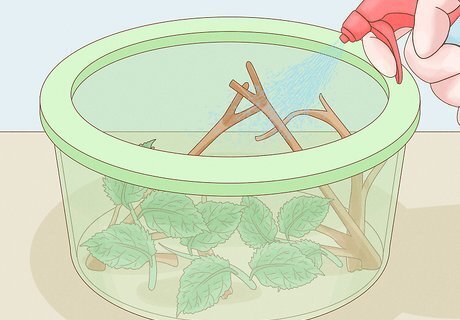
Keep your caterpillar’s home humid. Caterpillars like a humid environment. If the cage looks dry you can give it a few spritzes with filtered or distilled water, or even rain water collected from outside. Just be sure not to over-water the container, otherwise it could start growing mould.
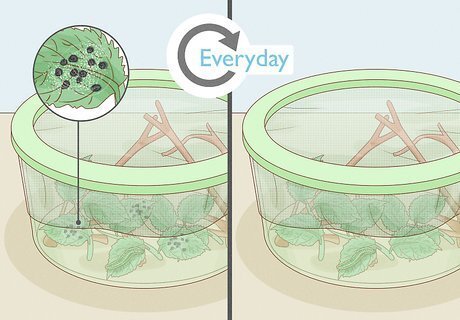
Clean the container every day. Caterpillars eat roughly 200 times their body weight each day, and produce a tonne of waste called “frass.” You must clean the frass out of the cage every day, otherwise your caterpillar's environment will be dirty, mouldy and unhealthy. For caterpillars that hang upside down to pupate, the easiest way to keep the cage clean is to line its bottom with paper towels and then remove and replace the paper towels with fresh ones each day.
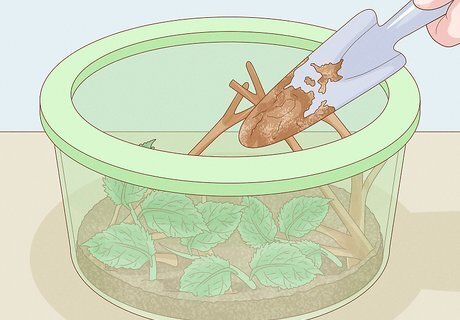
Add soil to the container bottom if your caterpillar will pupate underground. Some types of caterpillar pupate underground and require soil to do so. If this is the species of caterpillar you have, you’ll need to line your container with two inches of soil. If you’re unsure of what species of caterpillar you have, you’re best off lining the container with soil just in case.
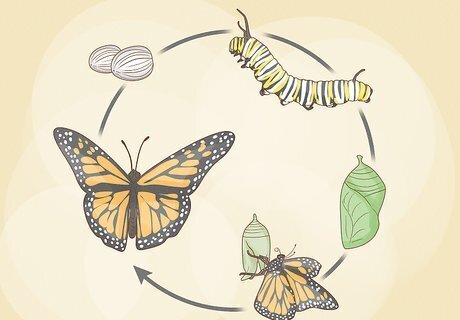
Know the lifecycle of butterflies and moths. Butterflies and moths begin as tiny eggs and then hatch into larvae (aka caterpillars). Caterpillars eat until they outgrow their skin, which usually happens about four times before the caterpillar reaches its final “instar”, or life stage between sheds. In its final instar the caterpillar becomes a pupa (for butterflies this is also known as a chrysalis). In many moth species the pupa stage will involve a cocoon or the caterpillar burrowing down into soil to pupate. After anywhere from a few days to a few months, a butterfly or moth will emerge from the pupa. Its goal is then to mate and reproduce before dying.
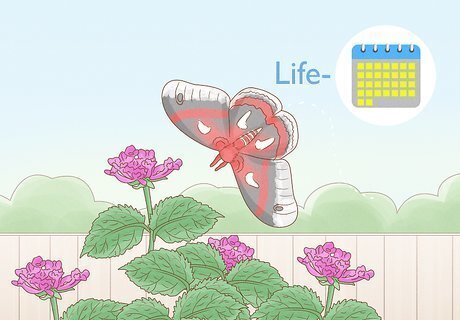
Know how long butterflies and moths live. The lifespan of a butterfly can be anywhere from a few days to nine months, depending on its environment and ability to avoid predators. The average lifespan estimate of butterflies is one month. Once your caterpillar becomes a butterfly, it’s best to simply let it go.
Identifying Common Host Plants
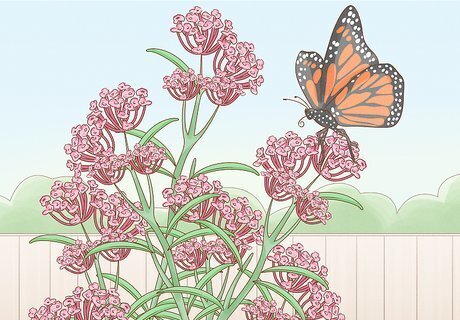
Look for milkweed plants in dry climates and locations. The Milkweed plant is host to the Monarch butterfly species, which is one of the most common butterfly species in North America. Milkweed is a tall perennial with large, tough leaves that are usually long and oval-shaped. The plant usually grows in dryer locations and can be found in fields and along roadsides. Of the 75 types of milkweed that grow across the U.S., Monarchs favor 30. Milkweed seeds are often a defining feature. They are small, flat and reddish-brown, with silky hair sprouting out of one end.
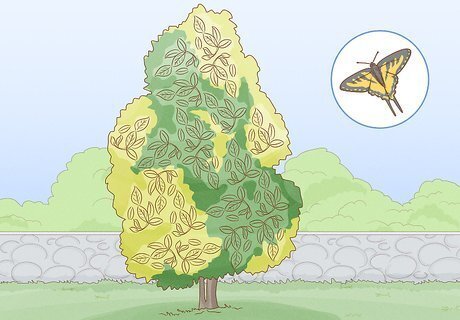
Search for spicebush plants in moist woods and marshes. Spicebush is a small dark-green shrub that features oval-shaped leaves and serves as the host plant for the Spicebush Swallowtail and the Eastern Tiger Swallowtail butterfly species. The plant thrives beneath larger trees located in forests and woods, and grows shiny red berries.
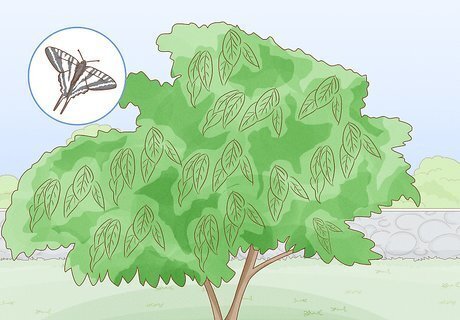
Look for Paw-Paw trees in any moist area throughout eastern North America. Paw-Paw trees are the host plants for Zebra Swallowtails, and can generally be found throughout the eastern region of North America near creeks, ravines, and steep hillsides. The Paw-Paw has large foliage that appears tropical and bears large pale fruits of the same name.
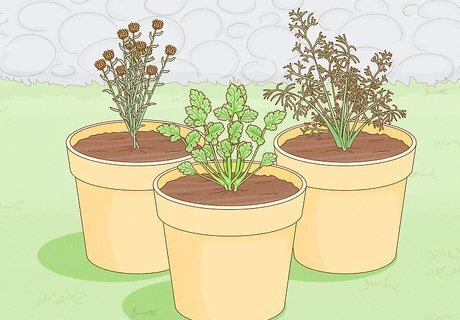
Search for herb plants such as dill, parsley, and fennel. The Black Swallowtail is attracted to herbal plants such as these, which can be helpful if you want to grow herbs at your home for the sake of finding caterpillars. Dill, parsley, and fennel are known to grow wildly throughout North America, and can also be purchased at most garden nurseries.
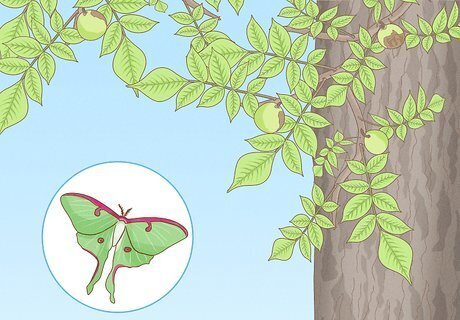
Search for walnut trees in moist bottomland areas throughout North America. Walnut trees are the host plant to the Luna Moth, which is one of the largest moths in North America. Walnut trees are usually found near ravines and streams, and grow in abundance throughout the state of California. Walnut trees can grow up to 70 feet (21.3 m) tall and tend to have branches that grow outward into a prominent, upright rounded shape.
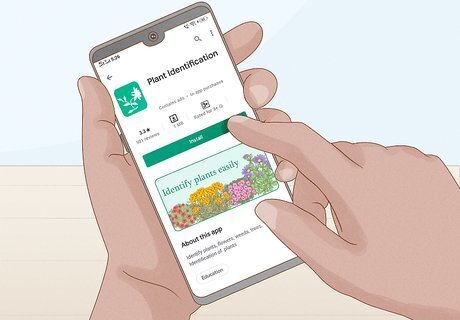
Download a plant-identifying app. If you’re having trouble identifying host plants, consider downloading a mobile app to hep you. To choose a good plant-identifying mobile app, check the screenshots and user reviews. Some plant-identifying apps are supported by universities and other research institutes, and kept up to date by experts in their fields. If possible, try downloading one of these apps before choosing a more commercial one.

Get a plant-identifying book. If you don’t have a tablet or smart phone, or would prefer not to bring electronic devices with you on nature walks, consider carrying a plant-identification book with you. You can buy this at most bookstores or even pick one up from your local library.

















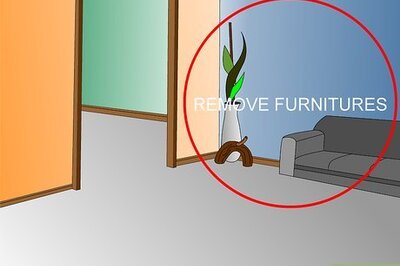

Comments
0 comment